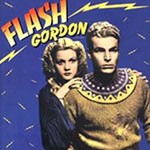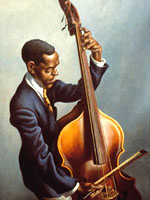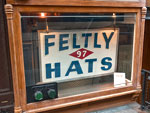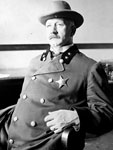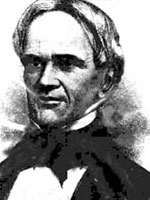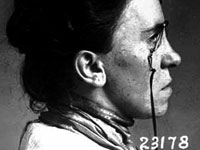Post-Civil-War industrialization and urbanization put new stresses on American law and society. Criminal records reveal the circumstances where social strain boiled over into violence and unrest. Using this website, visitors can search the complete Chicago Police Department Homicide Record Index from 1870 to 1930, detailing more than 11,000 homicides, and read and watch accompanying contextual material that explores tensions between laborers, industry leaders, political ideologies, social reformers, organized crime, and more.
The core of the site is the "Interactive Database." Here, visitors can search cases using keyword, case number, date, circumstances (accident, manslaughter, homicide, number of victims, number of defendants, method of killing, involvement of alcohol), details about the victim and defendant (age, gender, race, occupation), victim/defendant relationship, and legal outcome. Searches return one-line case summaries including the date, names of people involved, case number, a description of the crime, and legal outcome. Clicking on a result brings up details on the particular crime: time, location, type of death/homicide and details of homicide, details on the victim(s) and defendant(s), police involvement, and legal outcome.
Contextualizing primary and secondary sources frame this bare-bones information. A timeline features a summary of one major event and up to five photographs for every year. "Historical Context" currently offers a second timeline highlighting links to up to 17 notable cases for each year and a section on children's lives in the city, with nine newspaper articles on child labor and obituaries for activist Florence Kelley and lawyer Levy Mayer. (Sections on labor and reform movements and people and events did not work at the time of this review.) In "Legal Content," visitors can read short essays on topics related to Chicago criminal and social history, including capital punishment, anti-corruption campaigns, the Chicago Police Department, judges, lawyers, criminology, prostitution, gambling, murder-suicides, and accidents. Each essay links to related cases and onsite and off-site documents. "Legal Content" also hosts 16 downloadable acts and statutes under "The Laws."
"Crimes of the Century" organizes links to related cases under 23 topics, including the 1919 Chicago race riot and the Haymarket Affair. "Publications," the most valuable part of the site for teachers looking for primary sources, archives the full text of 15 primary and secondary documents related to Chicago crime and social change. Here users can download in PDF form modern studies on the death penalty, crime and policing in Chicago, and the Haymarket Affair, or download primary sources such as law codes and crime reports, the Hull House Maps and Papers, Chicago Daily News articles exposing graft and corruption, 19th-century studies of Chicago's homeless, and contemporary commentary on the Haymarket Affair. Finally, visitors can watch 18 interviews with present-day professors, judges, and lawyers in "Videos."
Though difficult to navigate, this site has rich resources to help students and teachers explore the challenges of change at the turn of the century.
